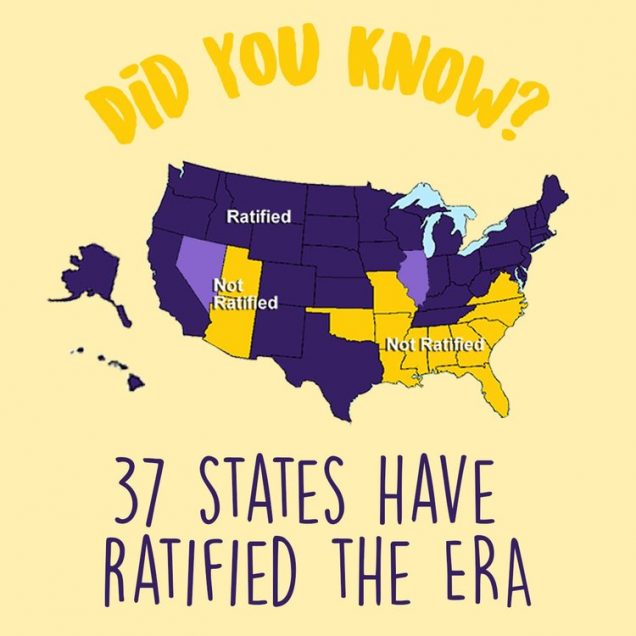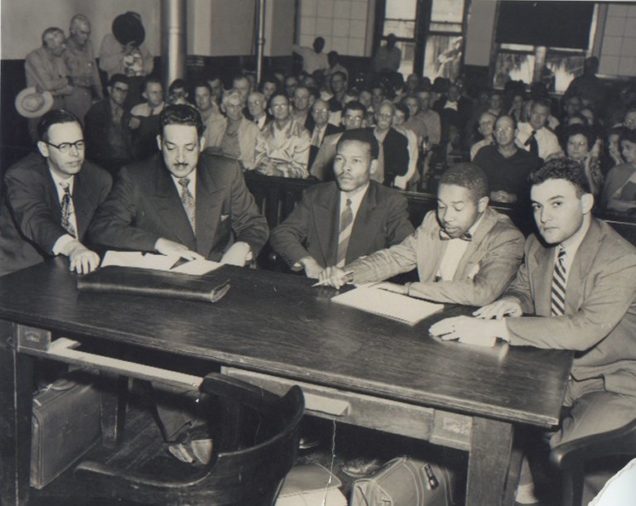Tagged: BU Law
February 7th, 2019
in Analysis, State Legislation
In 2016, Donald Trump won the electoral vote, and therefore the presidency, because of fewer than 80,000 people spread over 3 states; about the same population as Scranton, Pennsylvania. While there are many ways to analyze this narrow margin, the most important may be that elections can be decided by a small number of votes. This fact makes it increasingly important that governments ensure every eligible citizen has the ability to conveniently vote. When 80,000 people can decide a national election, any obstacle that inhibits citizens from voting can drastically change who our representatives are. One recent effort in several states is automatic voter registration. While not the solution to all voting problems, it is a worthwhile first step towards greater voter turnout.
In 2015, Oregon became the first state to adopt automatic voter registration.Since then, 12 more states and the District of Columbia have enacted similar legislation. Most recently, in August of 2018, Massachusetts Governor Charlie Baker signed an automatic registration bill into law. Automatic voter registration laws change the traditional opt-in registration methods into opt-out plans. The Massachusetts law, for instance, requires automatic registration for anyone who completes a transaction with the Department of Motor Vehicles (DMV) or signs up for state healthcare (MassHealth), unless they opt-out of registration . The law will take full effect in January 2020, in time for the next presidential election.
Because automatic voter registration is a relatively new design model, the research into whether or not it actually increases voter turnout is limited. However, the initial research from the Center for American Politics (CAP) seems positive. According to early numbers, of the 272,000 people in Oregon who were registered through the automatic system, more than 1/3 of them (approximately 98,000 people)voted in the 2016 election . This same data also suggests that Oregon’s automatic registration law has created a potential pool of voters who are more representative of the age, income, and ethnicity of the state’s residents. At the very least, there is clear and conclusive evidence to confirm that automatic voter registration will definitely increase the number of people who have the option of voting in the next election. Since 2016, Oregon’s registration rates have quadrupled at state DMV offices. There have been similar results in Vermont where, after only six months of its new system, registration rates rose 62% from the previous year . While the effect remains to be seen in Massachusetts, officials estimate that approximately 680,000 new voters will be registered because of the bill.
Despite these promising results, automatic voter registration has not been without its critics. Opponents are concerned about various issues such as fraud, duplicate registrations, and accidental enfranchisement for undocumented immigrants. Proponents believe that these concerns, however, are largely unfounded. To combat the risk of fraud and duplicate registrations, many states conduct their automatic registration through multiple governmental agencies that can all supply and confirm correct identifying information (such as changed addresses or last names). The Massachusetts law allows registration through two different agencies and also requires the state to link with the Electronic Registration Information Center (ERIC); a third-party nonprofit that will update and report changed voter information to the state. Concerns of accidental registration of undocumented immigrants are most heightened in places such as California, which allows undocumented residents to obtain drivers licenses while also providing automatic registration through the DMV. Election officials in California, however, state that all automatic registrations in California are cross referenced with voter eligibility databases the ensure that this fear cannot come to fruition.
Proponents of automatic voter registration argue that while the potential negative side effects of these laws are negligible, the benefits are huge. Automatic registration is a small, but highly effective, tool to help protect the most vulnerable from having their voting rights infringed upon. One important example of this can be found in the state of Georgia. Georgia has had automatic voter registration through the Department of Driver Services (DDS) since September of 2016. Prior to adopting automatic registration, the state required voter applications to meet extremely strict “precise match” requirements. Under these precise match requirements, applications ccould be held or rejected if they did not precisely match the information the state already had on file for that person. Applications were held up for trivial issues such as missing hyphens or a signature that looked slightly different. In 2016, The Secretary of state ended these precise match requirements just as the state began implementing automatic voter registration.

Georgia Capitol
Atlanta, 1889
During the 2018 midterm election Secretary of State Brian Kemp reinstated the practice of requiring precise match’s for voter registration and absentee ballots. This requirement caused widespread rejection of absentee ballots and mailed in voter registration applications– more than 53,000 ballots and applications because of precise match reasons. While 32% of residents in Georgia are black, approximately 70% of the rejected applications were from black residents. This seemingly suggests that one of the greatest issues with automatic voter registration is simply that it doesn’t do enough on its own to prevent voter suppression.
While automatic registration can effect great change in terms of the number of people who are registered to vote, it is only a beginning, and not an end, to improve the problem of voter suppression and voter turnout. The decision whether or not to vote is almost as personal as the decision of who to vote for. All citizens should have the right to choose whether they want to vote in any particular election. When state laws and policies make it difficult for people to register, the government ends up taking the decision out of the hands of too many Americans. The move towards easier registration is an important one. For a country whose elections are decided by so few votes, it’s imperative that anyone who wants to vote, gets to.
 Ashley Zink anticipates graduating from Boston University School of Law with a Juris Doctor in May 2020.
Ashley Zink anticipates graduating from Boston University School of Law with a Juris Doctor in May 2020.
Tagged automatic voting registration, Boston University, Boston University Law School, BU Law, elections, Georgia, Massachusetts, motor voter, voting
February 7th, 2019
in Federal Legislation, Legislative Oversight
Despite two years of the Trump administration’s get-tough-on-refugees policy, the latest statistics continue to show record numbers of migrants crossing the U.S. border, with “16,658 family members in September, the highest one-month total on record and an 80 percent increase from July.” This is just the latest in the periodic reports showing that Trump’s immigration policy has failed, which should prompt questions both about why it has failed, as well as why Trump continues to insist on such a patently immoral approach to policy. Since at least 2014, Republicans have pushed for draconian treatment of border-crossers on the theory that such treatment will deter people from entering the United States. However, deterennce ignores the reasons why people are fleeing their home countries, and thus predictably fails, suggesting that the G.O.P. has adopted the policy in order to appeal to a segment of the voting public whose fear and hate have been amplified by right-wing propaganda.
Shortly after taking office, Trump quickly began to make good on his campaign promises to get tough on immigration, reversing what he termed Democrats’ soft approach. These policies included the end of Obama’s Deferred Action for Childhood Arrivals program, the end of Temporary Protected Status for hundreds of thousands of people, and the implementation of harsh treatment of immigration detainees at the border, including family separation, prolonged detention of asylum-seekers, the use of prisons as “detention” facilities, and a concentration of resources to increase prosecute border-crossers (and significant evidence of over-enforcement). The goal of such policies is apparently rooted in a belief that such policies will deter migrants from attempting to enter the United States, notwithstanding the lack of evidence that such deterrence is effective.

BBC.Com
These policies should be seen as derivative of the rhetoric of Republican critics of President Obama’s initial response to the so-called “surge” of children crossing the border in 2014. In early June, Obama originally declared the situation a “humanitarian crisis” and directed officials to apprehend and provide care, including housing and medical treatment, and legal aid. However, with right-wing propaganda outlets such as The Daily Caller whipping up fear of the children at the border, Republican politicians seized on the opportunity to make the humanitarian crisis into a political one. Claiming the crisis was due a failure of the Obama administration, politicians such as House Judiciary Chair Robert Goodlatte suggested that the solution was simply an end to “Obama’s lax immigration enforcement policies” and rigorous enforcement of the immigration laws. And, by the end of June, the Obama administration, feeling the pressure from the right, shifted gears and adopted a policy of deterrence. This crackdown included increased enforcement and wide-spread use of detention centers, as well as an information campaign “to send a clear message to potential migrants so that they understand the significant dangers of this journey and what they will experience in the United States.” This created little political traction for Democrats, as Republicans insisted that it was too little, too late, and that draconian deterrence measures were necessary.
The reality is that migration to the United States from Central America is largely driven by push factors forcing people out of their home countries, not pull factors luring them to the United States, which explains the lack of evidence for the efficacy of deterrence. As a worker at a migrant shelter in Tucson, Arizona is reported as explaining, “Why would you undertake such a dangerous journey? When you’ve got a gun to your head, people threatening to rape your daughter, extort your business, force your son to work for the cartels. What would you do?” While Trump insists on depicting migrants from Central America as gang-members, or even soldiers “sent” by their home countries in a mythical war on American interests, it is probably best to think of human beings fleeing their nations because of violence as asylum-seekers.
The Refugee Act of 1980 defines refugees and asylum-seekers to be those who are persecuted, or have “a well-founded fear of persecution[,] on account of race, religion, nationality, membership in a particular social group, or political opinion.” The law also provides a right to any alien within the United States to seek asylum, requiring those seeking such status to cross the border. Trump appears to see asylum, one of the basic pillars of human rights law, as a loophole to be exploited by evildoers, and is seeking to close that “loophole,” if not through legislation, then through deterring those seeking safe-harbor. Trump’s Justice Department, has moved to exclude domestic violence and gang targeting as bases for establishing persecution based on membership in a particular social group, overturning Board of Immigration Appeals precedent. On a moral level, there seems little reason to distinguish between the persecution faced by political dissidents in totalitarian regimes, and that faced by victims of the reign of terror perpetrated by gangs in Central America. Certainly, the pervasive fear of violence under both regimes is what drives people to seek safety in other countries. It is this push-factor, the pervasive violence faced by many Central Americans in their home nations, that is driving migration to the United States, and no amount of deterrence, short of recreating the violence of their home nations at the American border, will change the minds of those who feel forced to flee for their lives.

NBC News
That said, as Trump is able to feed on fear and hate in order to build political power with his Republican base, it is unlikely that evidence-based policy arguments about the efficacy of deterrence policy will make much headway towards a reconsideration of said policy. Perhaps a congressional re-imagination made possible by the new Democratic House majority will lead to legislative changes prompting a humane response to what is at base a humanitarian crisis. The House leadership’s recent refusal to appropriate money for what many consider a boondoggle border wall suggests that Democrats are eager to pass sensible border policy rather than acquiesce to Trump’s grandstanding. Congressional mandates that the executive branch again consider domestic violence and gang intimidation as possible bases in the determination of asylum would be a start. Shifting resources from detention centers to asylum officers and immigration judges, thereby treating asylum-seekers as asylees and not felons would help as well. And, in the long-run, Congress should consider how best to address the push factors causing people to flee for their lives in the first place.
 Dan Ordorica anticipates earning his Juris Doctor from Boston University School of Law in May 2019.
Dan Ordorica anticipates earning his Juris Doctor from Boston University School of Law in May 2019.
Tagged border wall, Boston University, Boston University Law School, BU Law, caravan, Immigration, migrants, Refugees, Trump
February 7th, 2019
in Analysis, State Legislation
Healthcare is on the frontlines of legislative debates— the U.S. has the most expensive care and reports the poorest outcomes of all rich democracies (RDs). Several states have proposed legislation to innovate healthcare access and to safeguard against the destruction of the ACA. One “old idea” that recently gained momentum is single-payer, and for New York (NY), it may become a reality, with its fate resting with the new legislature. To date, only one state has briefly “experimented” with single-payer – Vermont, and it failed due to gross underestimation of its costs. In NY, a landmark study that evaluates the viability of NY’s single-payer bill, known as the New York Health Act (NYHA), conducted by RAND, detailed benefits and setbacks of the proposed legislation, and public reaction was mixed. Despite the not so encouraging findings, lessons can still be learned from this report.
Single-payer, coined as “Medicare for all”, is a health insurance system in which a single public agency organizes healthcare financing, ideally covering all types of essential healthcare services. Delivery of care itself, however, would remain largely private in a single-payer system.
Proposals for single-payer in the U.S. are not new. The earliest version came in 1943 by Senators Robert Wagner (D-New York), James Murray (D-Montana), and Representative John Dingell, Sr. (D-Michigan), known as the Wagner-Murray-Dingell Bill (and subsequently endorsed by President Truman in 1945). The post-World War II bill proposed funding health care through payroll and income taxes. The bill became entangled with the Cold War , was vilified as “socialized medicine” by its opponents, and was discarded. The idea was revived in the 1950s, when it was nearly impossible for an aging population to get private health insurance. The elderly advocated for subsidized coverage since they are no longer able to afford their care, and hospitals advocated for it to ensure that the healthcare services they provide were paid for. The result: Medicare was enacted in 1965— the first form of single-payer insurance in the U.S.
 Single-payer is gaining popularity once again. According to a Reuters poll, 70% of Americans support some form of single-payer coverage. Why? First, with the implementation of the ACA, there was a national momentum for states to expand their healthcare coverage. The health exchange created by the ACA made coverage accessible for many middle-income families and individuals. On the Medicaid side, progressive states elected to expand their eligibility coverage for individuals earning up to 138% of the federal poverty level in exchange for a 50% match in federal subsidies, a benefit many states enjoy. The most appealing provision of all is the mandated coverage of pre-existing conditions. With the all Republican take-over of the federal government in 2016, many Americans worried about what would happen to their coverage. Over the next two years, the ACA underwent congressional budget cuts, but despite efforts by Congress and President Trump, the ACA has grown in popularity with the general public.
Single-payer is gaining popularity once again. According to a Reuters poll, 70% of Americans support some form of single-payer coverage. Why? First, with the implementation of the ACA, there was a national momentum for states to expand their healthcare coverage. The health exchange created by the ACA made coverage accessible for many middle-income families and individuals. On the Medicaid side, progressive states elected to expand their eligibility coverage for individuals earning up to 138% of the federal poverty level in exchange for a 50% match in federal subsidies, a benefit many states enjoy. The most appealing provision of all is the mandated coverage of pre-existing conditions. With the all Republican take-over of the federal government in 2016, many Americans worried about what would happen to their coverage. Over the next two years, the ACA underwent congressional budget cuts, but despite efforts by Congress and President Trump, the ACA has grown in popularity with the general public.
In NY, the concept of single-payer was first introduced in 1992 by Assembly member Richard Gottfried (NY-D). The goal of NYHA is to provide universal insurance coverage with no cost-sharing for New Yorkers, regardless of legal status, and would cover almost all comprehensive services. Bill proponents expect increased access to care and reduced costs by removing high administrative overhead costs and reducing unjustifiably high prescription drug costs. Much like the Wagner-Murray-Dingell Bill, NYHA would be funded through payroll and income taxes. Since 2015, the NYHA has passed the Assembly floor four times. Although 31 state senators co-signed the bill, it has been stopped in the Senate by just one vote. This may now change with the Democrats taking back the Senate majority, although the cost may be a deterrent.
Despite the national and legislative enthusiasm, New Yorkers have been skeptical of single-payer reform. According to a 2018 Mercury Public Affairs poll, only 33% support the bill. Over 60%, however, said they would support increased subsidies to assist low and middle-income families. Why the opposition? The number one reason of 66% polled: taxes would pose a high burden.
The RAND study assessed “near-term” and “long-term” impacts of the bill. Overall, it found that single-payer would be viable, but with big caveats. The system would expand health care access, all while generating an estimated $15 billion in net savings (3.1%) on healthcare costs by 2031. Still, near-term are where the problems lie. From the political side, this would require the federal government to issue a waiver to redirect all federal and state funds to NYHA. Just weeks prior to this report, the Centers for Medicare & Medicaid Services called California’s similar proposal “unworkable” and indicated similar waivers would not be approved. On the fiscal side, health care reform comes with a steep price: $139 billion in additional state tax revenue would be needed by 2022, that is 156% more than what is currently being collected. This amount would be amassed through payroll and income tax that would supplant the employer contribution and premiums and out-of-pocket costs. RAND applied a generic tax schedule based on three income brackets. For low-income families, they would be taxed 6.1% of their payroll income and 6.2% for non-payroll income by 2022. For middle-income families, the rates would range from 12.2% to 12.4%, and for high-income, their tax rate would increase up to 18.3% - nearly three times of what they are paying now. Moreover, Medicaid and Essential Plan (i.e. the NY Health Exchange) enrollees would pay more to get healthcare coverage. Assembly member Gottfried praised the study and suggested that they can adjust taxes accordingly so that high income families would pay more in taxes in order to help low and middle-income families afford their care. These tax hikes would exceed the combined costs of what New Yorkers are currently paying in taxes and healthcare benefits—explaining the bill’s unpopularity. Using the RAND report as a guide, it is likely that the state legislature will explore mechanisms to help finance their proposal in the upcoming session.

New York State Capitol
Albany 1899
While single-payer hasn’t had much luck in the U.S., universal care payment methods, including single-payer, have been successful in other RDs. Regardless of each RD’s financing method, there is one consistent feature of success: national political will to implement it. Imagine if the politics of the cold war did not interfere with establishing a national health insurance plan? Would it have been possible to implement a streamlined and efficient plan? If our culture would have capitalized on the Medicare momentum, would we accept a collective sense of community regarding our healthcare? Vermont tried to implement single-payer with little success due to gross budget underestimations and faint national support. The RAND report sheds light on the cost of single-payer and suggests that there needs to be federal political will to support it. Let these findings and other evidence guide lawmakers as the search for a modest solution continues. Perhaps Wagner’s vision may still be a solution.
Sarah Zahakos is working toward a PhD in Health Law, Policy & Management at the Boston University School of Public Health.
AHRQ T32 Research Fellow
Training in Health Services Research for Vulnerable Populations
Grant # 2T32HS022242
Tagged ACA, AHRQ T32 Research Fellow, Boston University Law School, Boston University School of Law, BU Law, Health Care, insurance, Medicaid, New York, New York Assembly, Obamacare, single-payer health care
February 5th, 2019
in Analysis, Federal Legislation, State Legislation
At a time when the issues of gender and sexual harassment have come to a head, some activists are looking to a decades-old proposed constitutional amendment to secure gender equality. The Equal Rights Amendment (“ERA”), originally proposed by suffragist Alice Paul in 1923, would affirmatively state that no person’s rights under the law may be denied or abridged based on sex. This would raise the level of judicial scrutiny afforded to claims of gender discrimination from the “intermediate” and often uncertain level of scrutiny to the much more arduous level of strict scrutiny. Strict scrutiny would make gender a protected class and grant legal safeguards for gender discrimination claims on par with those of claims of racial discrimination. Despite renewed public support for the ERA, its complicated history and potential future passage raise contentious legal issues.
The ERA was introduced in every Congressional session from 1923 until its eventual passage in 1972. After passage, the landmark legislation went to the states for ratification; needing the ratification of at least 38 states—two thirds of the states—before the congressionally imposed deadline of March 22, 1979. While there was an initial surge in ratification, only 35 states ultimately ratified the ERA. Congress extended the deadline to June 30, 1982, however no other states ratified in that time.
After the deadline passed without the prerequisite ratification, the ERA largely disappeared from the national conversation and lay dormant until its contemporary resurgence. Millions participated in the Women’s Marches in response to President Trump’s election, and the #MeToo movement aimed at ending workplace sexual assault and harassment; both reflect a renewed push for gender equality. In light of those movements, the ERA, too, gained steam. On March 22, 2017, exactly 45 years after Congress first passed the ERA, Nevada became the 36th state to ratify the amendment. A little over a year later, on March 30, 2018, Illinois followed suit, leaving the ERA needing only one more state to reach the required two-thirds of states. The final necessary ratification may come in the upcoming legislative session beginning in January, as Virginia lawmakers have recently wrapped up VAratifyERA, a 10-day, bipartisan bus tour of Virginia aiming to gather support for the bill across the state.
 While activists pursue a 38th ratification, legal scholars debate the legitimacy of a passage of the amendment so far beyond Congress’ deadline. Does Congress have the power to simply extend the deadline again and certify the ERA’s passage if a 38th state passes it, or did the ERA expire in 1982, rendering a 38th ratification moot?
While activists pursue a 38th ratification, legal scholars debate the legitimacy of a passage of the amendment so far beyond Congress’ deadline. Does Congress have the power to simply extend the deadline again and certify the ERA’s passage if a 38th state passes it, or did the ERA expire in 1982, rendering a 38th ratification moot?
According to a 2018 Congressional Research Service (CRS) report on the ERA and ratification issues, ERA advocates argue that a contemporary ratification is valid given Congress’ broad authority over the constitutional amendment process, including the power to extend or limit the deadline for the ERA. ERA supporters point to Article V of the Constitution—giving Congress broad power to propose amendments “whenever two thirds of both houses shall deem it necessary” and stating that proposed amendments are “valid to all intents and purposes” when ratified by the legislatures of three fourths of states—to argue that Congress may extend ratification deadlines as it sees fit. Notably, Article V does include any specific time limits related to constitutional amendments, while other constitutional rules with time periods are explicitly specified. Proponents of the ERA, including Nevada’s ERA Ratification Organizer, point to the 27th Amendment’s ratification process to support an expanded—if not long—ratification process. The 27th Amendment, the most recent amendment to the Constitution imposing rules on increases or decreases to the salaries of members of Congress, was introduced in 1789, without a deadline, and was not fully ratified until 1992. ERA supporters argue that Congress can extend deadlines where the time limits appear only in the original proposing clause, not the text of the amendment itself. Finally, the fact that Congress already extended the deadline once suggests that Congress has the power to do so again.
According to the CRS report, opponents argue that despite Congress’ plenary power over the constitutional amendment process, extending the ERA deadline to allow for contemporary ratification would be unconstitutional because of ratifying states’ potential reliance on the time period in their decision to ratify. However, since the deadline was only in the proposing clause and all of the states’ ERA ratifications prior to the first deadline extension raised no constitutional issues, this argument may lack merit.
Significantly, a 38th ratification of the ERA may raise the question of whether states’ rescinding of ratifications of constitutional amendments are valid, as five states—Idaho, Kentucky, Nebraska, South Dakota, and Tennessee—have withdrawn their ratifications. This is not a settled area of law, but ERA proponents argue that such rescissions are not legal, as Article V provides only for ratification procedures, not rescission. The passage of the Fourteenth Amendment in 1868 lends credence to this argument, at it was certified based on the ratification of a two-thirds majority of states including Ohio and New Jersey, despite the fact that they had previously attempted to withdraw ratification. Additionally, the Supreme Court has been reluctant to weigh in on the validity of states’ ratifications of recessions of constitutional amendments. In Coleman v. Miller (1939), the Court regarded the question of the “efficacy of ratifications by state legislatures…” as a political question and did not issue a ruling on the merits. Therefore, it is likely that Congress could certify the ERA in a similar vein to the Fourteenth Amendment—that is, including ratifications from states that have since attempted to withdrawal their ratifications—legally and without intervention from the courts.
While the legal status of a 38th state ratification may be murky, the importance of the ERA today is clear. United States Supreme Court Justice Ruth Bader Ginsburg has supported the ERA, arguing that while recent women’s rights advancements through legislation are positive, it could be repealed without an underlying principle of equality enshrined in the Constitution. For example, a 2012 Wisconsin Act rolled back protections for victims of wage discrimination. Practically, the ERA’s heightened scrutiny on gender discrimination cases would go a long way in preventing rollbacks of laws protecting gender equality as well as preventing the implementation of laws that actively discriminate based on gender. For example, the ERA would likely have prevented the rollback of the Wisconsin wage equality law. Experts also argue that a heightened level of scrutiny for gender discrimination claims likely would have changed the outcome of the famous 2014 Burwell v. Hobby Lobby case, which allowed for-profit companies to deny its employees health coverage of contraception based on religious objections. If the ERA can win its final state ratification and pass through the many legal hurdles it faces, it would represent the realization of an almost century-long ordeal to ensure a basic principle of equal protection and rights under the law regardless of gender.
 Chloe Aubuchon graduated from the University of Michigan with a B.A. in International Studies and Spanish in 2017 and anticipates graduating from Boston University School of Law in May 2020.
Chloe Aubuchon graduated from the University of Michigan with a B.A. in International Studies and Spanish in 2017 and anticipates graduating from Boston University School of Law in May 2020.
Tagged Boston University Law School, BU Law, Congress, Equal Rights Amendment, ERA, Rights
December 13th, 2018
in Africa, Conference, Legal Education, Legislative Operations
The bright promise that was the Africa Parliamentary Knowledge Network (APKN) is seemingly fading away. This important project, where African parliamentarians and their staff committed to help each other build capacity and share information was making a real difference in the governance of Africa. Sadly, when the United Nation's Department of Economic and Social Advancement (UN/DESA), using funds provided by the government of Italy, stopped supporting the APKN financially a few years ago, the Network not only lost momentum, but seemingly stopped altogether. Just because the Network has been quiet, and perhaps has frayed from lack of use (the Network’s website, APKN.org, is now a Japanese fashion page) does not mean that it is lost. The talented and dedicated people from the various parliaments who made the APKN so promising should take the lead and chart a new course for the Network. This will take participation from across the Continent and should be driven by African voices. This effort will also take money. It is unlikely the UN will be a source-- but perhaps between the APKN members and the partners who have already shown a willingness to support the Network, we can find a new vision and the money to make that vision a reality. For instance, the Commonwealth Parliamentary Association is a potential partner. This conversation could start at the Commonwealth Association of Legislative Counsel (CALC) conference that will take place in Livingstone, Zambia April 1-3, 2019.
 The APKN was established in June 2008 by the international conference “Africa Parliamentary Knowledge Network - Building Together Open and Learning Parliaments in Africa” in Cairo, Egypt. The APKN operated under the authority of the Speakers and Presidents of APKN member assemblies--30 assemblies in all. Representatives of the APKN assemblies met in plenary every two years to approve the reports of activities, the Executive Committee's strategic action plan, and to set new priorities and goals for the next two years. The Network was “hosted" by a variety of Parliaments who took the lead in putting together conferences and led the Executive Committee. The first host was Egypt, before the turmoil and revolution in that country. The next host was South Africa, and finally the Pan-African Parliament took the lead.
The APKN was established in June 2008 by the international conference “Africa Parliamentary Knowledge Network - Building Together Open and Learning Parliaments in Africa” in Cairo, Egypt. The APKN operated under the authority of the Speakers and Presidents of APKN member assemblies--30 assemblies in all. Representatives of the APKN assemblies met in plenary every two years to approve the reports of activities, the Executive Committee's strategic action plan, and to set new priorities and goals for the next two years. The Network was “hosted" by a variety of Parliaments who took the lead in putting together conferences and led the Executive Committee. The first host was Egypt, before the turmoil and revolution in that country. The next host was South Africa, and finally the Pan-African Parliament took the lead.
During its short life, the APKN had a string of successes; thanks in large part to the tireless work of the UN/DESA technical advisors, Flavio Zeni and Dr. Cecilia Matanga. The APKN issued a comprehensive set of legislative drafting guidelines for use across the Continent to allow better informatics sharing while remaining true to best practices in legislative drafting. An assembly of drafters from APKN countries refined and ratified the Guidelines at a 2010 conference in Cape Town South Africa. In 2011, UN/DESA, in conjunction with the APKN issued a handbook on designing legislation for the free use of drafters everywhere.
Perhaps the greatest victory is that earlier this year the legislative platform designed for APKN, Akoma Ntoso V1.0 became the newest Organization for the Advancement of Structured Information Standards (OASIS) Standard— the only OASIS standard with an African name (“linked hearts” in the Akan language of West Africa) to honor those who nurtured and promoted the platform. This platform is used by many institutions around the world — the European Parliament, European Commission, the Italian and Swiss parliaments, and other parliaments in both America and Asia. Still, no African parliament has adopted Akoma Ntoso platform —perhaps because of the missing APKN.
APKN served other important functions: one was simply bringing African legislators and drafters together to meet, talk and exchange ideas at periodic conferences. In addition, the APKN LawClinics had law students at Boston University School of Law drafting legislation with African drafters and law students at African universities for parliaments in Uganda, Zambia, Liberia and the East African Legislative Assembly.
Where do we go now? At a conference in 2011, when participants asked what APKN would do next, Flavio Zeni responded, "You are APKN!" The Network was never meant to be driven by the UN or an outside partner such as a European parliament or American university. African parliamentarians and African drafters must lead the Network and give it vitality.
Should there be a website to share legislative ideas and language like the United States' National Council of State Legislatures? Should the Network train legislative drafters? Should it train new members of parliament? Should it take position on and suggest methods for legislative reform? Should there be an annual conference, and what would be the goals of that conference?
We will send this posting to the various African parliamentary leaders, those who have been active with the APKN in the past, and to the CALC community at large. If anyone who would like to make suggestions, on either a vision for APKN or a source of funding, we will post the ideas on BU Law’s Dome blog webpage. Our hope is that we can bring several potential suggestions to the CALC conference in April for discussion amongst drafters from APKN countries and their allies. Together, we can reinvigorate APKN and support stronger parliaments across Africa.
 Elizabeth Bakibinga-Gaswaga was involved in AKPN as a legislative counsel for the Parliament of Uganda and is an active member of CALC. Elizabeth represented Africa on the CALC Executive Council and later served as CALC's Vice President.
Elizabeth Bakibinga-Gaswaga was involved in AKPN as a legislative counsel for the Parliament of Uganda and is an active member of CALC. Elizabeth represented Africa on the CALC Executive Council and later served as CALC's Vice President.
 Sean J. Kealy is a clinical associate professor of law at Boston University School of Law where he directs the legislative clinical programs. Sean helped organize the APKN LawClinics and is an associate member of CALC
Sean J. Kealy is a clinical associate professor of law at Boston University School of Law where he directs the legislative clinical programs. Sean helped organize the APKN LawClinics and is an associate member of CALC
Tagged Africa, Africa Parliamentary Knowledge Network, APKN, Boston University School of Law, BU Law, CALC, Commonwealth Association of Legislative Counsel, Elizabeth Bakibinga-Gaswaga, Parliament, Sean J. Kealy
June 28th, 2018
in Analysis, Legislative Operations
In my last post, I argued that the process of drafting new legislation should be undertaken with a problem-solving mindset. I suggested that problem-solving tools from a variety of disciplines could be advantageously adapted to the legislative process. In this post, I will present the manner in which one specific tool—Failure Modes and Effects Analysis (FMEA)—could be used in legislative drafting.
FMEA was originally developed as a tool to improve processes within the manufacturing industry. An FMEA is a “systemic method of identifying product and process problems before they occur.” Robin E. McDermott, Raymond J. Mikulak, Michael R. Beauregard, The Basics of FMEA 3 (1996). (Many of the details of the FMEA process discussed in this post come from The Basics of FMEA. I highly recommend that anyone interested in performing FMEAs in the legislative process read this book. The steps of an FMEA can be found in the book or online, here.) In the manufacturing context, the goal of an FMEA is to figure out how a new product or process is likely to fail, before that failure happens, and then to recommend improvements that will preemptively prevent the failure. In FMEA terminology, the process is designed to identify and resolve “failure modes” in a product or process.
In the legislative context, a bill working its way through the legislature can be thought of as the new “product or process” to which an FMEA can be applied. In this post, I will discuss where in the legislative process an FMEA could be performed, what the make-up of an FMEA team might be, and what beneficial output could be expected from an FMEA.
The authors of The Basics of FMEA, recommend that “[i]deally, FMEAs are conducted in the product design or process development stages, although conducting an FMEA on existing products and processes may also yield huge benefits.” The Basics of FMEA at 3. Likewise, a legislature could use FMEAs to analyze already existing laws. However, in this post, I will only describe FMEAs that would take place during the drafting process. Such an FMEA would likely be most useful to the legislative process after a committee performs hearings and before it votes on a bill. At this point, the committee has already gathered a wealth of useful information and the legislature still has wide latitude to make changes to the bill when potential failure modes are discovered.
The FMEA team itself should consist of four to six members. Id. at 15. Idealistically, the team will “bring a variety of perspectives and experiences to the project.” Id. This will likely result in team members having varying degrees of expertise in the relevant subject matter and a range of familiarity with the legislation being reviewed. For example, an FMEA team for a bill related to criminal justice might include: a legislative attorney familiar with the bill, a representative from the police force, an associate district attorney, a public defender, and representatives from advocacy groups or lobbyists. It is worth noting that many of the individuals on the team may be the same individuals who provided testimony in a committee hearing. Such overlap does not diminish the unique value that can be obtained by an FMEA. Likewise, an FMEA would in no way detract from the value of the committee hearing. Committee hearings give advocates an opportunity to state their case and respond to questions from members of the committee. The FMEA would give these individuals an opportunity to interact with one another and to work towards improving legislation in ways in which they can all agree.
It is also important to note that many of the FMEA team members may also represent the individuals that the law is meant to address—the “role occupants” and implementing agencies. See Ann Seidman & Robert B. Seidman, Instrumentalism 2.0: Legislative Drafting for Democratic Social Change, 5 Legisprudence 95, 95 (2011). The Seidmans note that a role occupant’s failure “to respond to a law’s commands, prohibitions or permissions, signifies . . .
that, in drafting the bill’s detailed prescriptions, the drafter failed adequately to take into account the relevant constraints and resources in the role occupant’s environment.” Id. at 136. Bringing representatives of role occupants and implementing agencies into the legislative process via FMEAs would help to reduce these drafting failures.
Of course, the ultimate language of a bill must be determined by legislators and legislative attorneys. Nevertheless, the recommendations of an FMEA team regarding specific bill language could be of significant help to those tasked with the actual drafting of the bill. An appropriate balance of power between drafters and the FMEA team can be established by providing FMEA teams with “clearly defined boundaries within which they are free to conduct the FMEA and suggest and implement solutions.” The Basics of FMEA at 20-23. For example, the scope of a drafting-focused FMEA could be limited to the language of the bill, excluding considerations of the substantive legislative plan embodied in the bill. While a broad legislative scheme may be well suited to effectuate desired change, the language of a bill may fail to adequately implement the legislative plan. Such an FMEA could identify, document, and recommend corrections to any problematic drafting discovered. Once the bill is revised, the FMEA team could re-convene and repeat its analysis.
Whenever a new step is added to a process, a fear may arise that the process is becoming more complex, and therefore less efficient. The inclusion of FMEAs in the process of drafting legislation would undoubtedly require legislative drafters to overcome a steep learning curve. Once that learning curve is overcome, however, use of the FMEA methodology will yield significant benefits. In the short term, the FMEA could uncover and correct potential problems in a bill before it leaves its committee. In the long term, effective FMEAs would decrease the likelihood that laws would need to be revised to address problems that were not foreseen during the drafting process. Idealistically, the end result will be a more efficient legislative drafting process resulting in the passing of better drafted laws.
 Andrew P. McDonough graduated from Boston University School of Law in May 2018.
Andrew P. McDonough graduated from Boston University School of Law in May 2018.
Tagged Boston University Law School, BU Law, evidence-based legislation, Failure Modes and Effects Analysis, FMEA, ILTAM, Professor Ann Seidman, Professor Robert Seidman
June 28th, 2018
in Analysis, State Legislation
In April 2017, the Florida legislature passed a resolution (HCR 631) formally apologizing for the unjust prosecution and persecution of the “Groveland Four”, and calling for their exoneration by Governor Rick Scott. The “Groveland Four” is the popularized moniker for Charles Greenlee, Walter Irvin, Samuel Shepherd, and Ernest Thomas; four young black males (age 16 and up) accused of raping a 17-year-old white woman in Groveland, 1948. The infamous case took place during the Jim Crow era, following generations of wrongfully accused, wrongfully prosecuted, wrongfully convicted, and wrongfully executed black citizens. Shortly after they were accused of the crime, Samuel Shepard and Walter Irvin, both World War II veterans, were abducted by law enforcement officers and taken to a secluded spot to be beaten and tortured. After this assault, the deputy officer took Shepard and Irvin to the scene of the crime, only to find that their shoes did not match the footprints that allegedly belonged to the true assailants. Frustrated, the officers took Shepard and Irvin to an interrogation room where they were beaten and tortured until they confessed.
Eventually, Charles Greenlee was picked up by the authorities and subjected to the same treatment a

Charles Greenlee, Samuel Shepherd and Walter Irvin in custody
Shepard and Irvin, but Ernest Thomas caught wind of the investigation and attempted to flee. Thomas’s flight incited a lynch mob, led by both the local sheriff’s department as well as the Ku Klux Klan. The mob not only hunted down and killed Thomas over 200 miles away, but also terrorized the black, segregated section of Groveland, burning down the suspects’ houses and causing numerous black residents to abandon the city in fear. Sheriff Willis McCall, though complicit in stirring up some of chaos, attempted restoring a semblance of order by having the remaining suspects moved from the local jail to the state prison to await trial. The NAACP and the FBI got involved with the case as national attention grew. After documenting the beatings and torture by local law enforcement, the FBI recommended that the Tampa U.S. Attorney General bring charges, but no indictments were made. Franklin Williams of the NAACP represented the remaining suspects, and through his own investigation, suspected the rape accusation was actually a cover-up of a domestic violence incident between the accuser and her boyfriend. During the trial, there was evidence that the suspects had not been in town during the incident and that the footprint (which never matched the suspects’ shoes) was fabricated by the deputy. Still, an all-white jury found Shepard, Irvin, and Greenlee guilty within minutes of deliberating, sentencing Shepard and Irvin to death, and 16-year-old Greenlee to life in prison.
 The United States Supreme Court overturned the capital convictions (Greenlee never appealed) and remanded the case for retrial. Sheriff McCall was transferring Shepard and Irvin back to Lake County (Groveland’s county) for the trial, when McCall claimed he was attacked by the two black men and forced to shoot them in self-defense. Fortunately, Irvin survived the multiple gunshots and told his version of events, which included an unprovoked execution of Shepard and collusion between McCall and his deputy to cover up the failed execution of Irvin. At the retrial, eventual first black Supreme Court justice, Thurgood Marshall represented Irvin, but faced problems similar to the first trial, and Irvin was sentenced to death again. The Florida governor spared Irvin and commuted his sentence to life in prison; Irvin went on to spend 14 years in prison and was released in 1968. He fled Florida for Tennessee, but came to visit Lake County in 1970, where he was found dead in his car. Greenlee was eventually released.
The United States Supreme Court overturned the capital convictions (Greenlee never appealed) and remanded the case for retrial. Sheriff McCall was transferring Shepard and Irvin back to Lake County (Groveland’s county) for the trial, when McCall claimed he was attacked by the two black men and forced to shoot them in self-defense. Fortunately, Irvin survived the multiple gunshots and told his version of events, which included an unprovoked execution of Shepard and collusion between McCall and his deputy to cover up the failed execution of Irvin. At the retrial, eventual first black Supreme Court justice, Thurgood Marshall represented Irvin, but faced problems similar to the first trial, and Irvin was sentenced to death again. The Florida governor spared Irvin and commuted his sentence to life in prison; Irvin went on to spend 14 years in prison and was released in 1968. He fled Florida for Tennessee, but came to visit Lake County in 1970, where he was found dead in his car. Greenlee was eventually released.

Irvin with his lawyers Alex Akerman, Thurgood Marshall, Paul Perkins and Jack Greenberg
The terrible saga of the Groveland Four is only a snippet of the corruption and racism that plagued Lake County, Florida, and the criminal justice system as a whole during and after Jim Crow. Still, this recent formal apology only follows after mounting public pressure to acknowledges the horrendous wrongs of the state. In 2012, the same year Greenlee died, the book Devil in the Grove, which tells the story of the Groveland Four, came out. This book not only renewed interest in the case, but also won a Pulitzer Prize. The book drove a University of Florida student to launch a massive Change.org petition, and with the help of the Miami Herald and Greenlee’s daughter, the matter of an apology and exoneration finally reached a boiling point. Now that an acknowledgment and formal apology has passed the legislature, the wronged accused’s families – and history itself – await the posthumous exoneration by the governor.
If the governor eventually exonerates these innocent African Americans, after waiting over a year to do so, it would follow a growing trend of acknowledging the terrible failures of the criminal justice system and political leaders during the 20th century. However, given the quantity and severity of these failures, should leaders be taking more active steps to right these egregious wrongs, instead of simply apologizing and exonerating? While surviving family members of these victims may be gladdened by a formal acknowledgement of the truth, should they be compensated for their generational pain and suffering, lost wages, even lost earning potential? The impact of these unjust persecutions is not limited to their historical time period, nor to the victims’ families – the community, and even the whole nation, felt the repercussions of these state sanctioned racist acts. These acts also highlight glaring failures of accountability and checks and balances in the criminal justice system. Politicians score political points for acknowledging their state’s past, without taking proactive measures to prevent the same injustices in the future. Civil rights activists believe lawmakers should do more than just apologize, and instead commit resources to ensuring citizens are educated about these dark corners of history, as well as reforming law enforcement offices to ensure accountability and true justice. Others believe that the apologies are not even necessary; what happened in the past should remain there, and present-day America should not apologize for the sins of its fathers. Either way, as the nation reconciles more of these injustices, lawmakers should be thinking of ways to protect their constituents from future injustice.
 Andrea Ogechi-Okoro graduated from Boston University School of Law in May 2018.
Andrea Ogechi-Okoro graduated from Boston University School of Law in May 2018.
Tagged Boston University Law School, BU Law, civil rights, Florida, Gov. Rick Scott, Groveland Four, wrongful conviction
June 28th, 2018
in Analysis, Federal Legislation
On December 20, 2017 Congress passed H.R. 1, the Tax Cuts and Jobs Act. This act introduces the most sweeping tax changes in decades lowering individual and corporate tax rates, with one stated goal of allowing buyers to write off the costs of new investments. In relevant part, this Act introduces one provision that removes a favorable tax rate for innovators with self-created intellectual property and eliminates the ability to treat certain self-created intellectual property as capital assets.
Under the prior tax scheme, self-created intellectual property would have been subject to the capital gains tax rate following sale of those assets. However, Section 1221 of the Internal Revenue Code under the new law exempts self-created intellectual property from capital gains treatment.
 “This new tax law amends IRC Section 1221(a)(3), resulting in the exclusion of a patent, invention, model or design (whether or not patented), and a secret formula or process that is held either by the taxpayer who created the property or a taxpayer with a substituted or transferred basis from the taxpayer who created the property (or for whom the property was created) from the definition of ‘capital asset.’ As a result of this exclusion, gains or losses from the sale or exchange of a patent, invention, model or design (whether or not patented), or a secret formula or process that is held either by the taxpayer who created the property or a taxpayer with a substituted or transferred basis from the taxpayer who created the property (or for whom the property was created) will not receive capital gains treatment.”
“This new tax law amends IRC Section 1221(a)(3), resulting in the exclusion of a patent, invention, model or design (whether or not patented), and a secret formula or process that is held either by the taxpayer who created the property or a taxpayer with a substituted or transferred basis from the taxpayer who created the property (or for whom the property was created) from the definition of ‘capital asset.’ As a result of this exclusion, gains or losses from the sale or exchange of a patent, invention, model or design (whether or not patented), or a secret formula or process that is held either by the taxpayer who created the property or a taxpayer with a substituted or transferred basis from the taxpayer who created the property (or for whom the property was created) will not receive capital gains treatment.”
Effectively, the sale of self-made intellectual property typically will now be subject to the higher top individual tax rate of 37 percent, as opposed to the capital gains tax rate of 20 percent. In practice, this will dramatically alter if and how a seller chooses to dispose of these assets.
Before, sellers would be encouraged to sell self-made intellectual property; however, under the new scheme, sellers are less encouraged to sell these assets because they will be subjected to a significantly higher tax rate. Under the previous tax scheme, a partnership’s sale of assets could be eligible for the long-term capital gains rate. Under the new Act, entrepreneurs and individual inventors possessing newly designed, self-made technologies will not be eligible for the lower capital gains rate when they create a company from that technology or sell the technology to another who will create a company. To net the same amount of after-tax dollars following a sale, owners of self-created intellectual property must seek a higher purchase price to offset the higher tax treatment. In effect, the new tax scheme alters the pricing and value of a patent.
Congress’s intent regarding the capital gains tax is that profits and losses arising from everyday business operations be characterized as ordinary income and loss, not capital gains. Therefore, the “self-made intangibles” exclusion is likely to be broadly construed to include most forms of intellectual property and this exclusion furthers that broad purpose. However, the practical effect of this exclusion from the capital gains tax is curious considering Congress’s goals of the Tax Cuts and Jobs Act. The exclusion eliminates an incentive to sell assets, which conflicts with the legislation’s goal of allowing buyers to write off the cost of new investments. Rather than further incentivizing investment, this provision erects a significant barrier to investment. Buyers will be eager as ever to purchase assets because of immediate expensing, but sellers will be hesitant to sell.
operations be characterized as ordinary income and loss, not capital gains. Therefore, the “self-made intangibles” exclusion is likely to be broadly construed to include most forms of intellectual property and this exclusion furthers that broad purpose. However, the practical effect of this exclusion from the capital gains tax is curious considering Congress’s goals of the Tax Cuts and Jobs Act. The exclusion eliminates an incentive to sell assets, which conflicts with the legislation’s goal of allowing buyers to write off the cost of new investments. Rather than further incentivizing investment, this provision erects a significant barrier to investment. Buyers will be eager as ever to purchase assets because of immediate expensing, but sellers will be hesitant to sell.
There are a few limitations to this discussion. Section 1221’s exception of intellectual property from the capital gains tax rate will likely only have a practical effect on the behavior of individuals, rather than corporations. The difference between the capital gains rate and ordinary income is much greater for individuals than it is for corporations; the corporate tax rate under H.R. 1 is 21 percent, only a one percent increase from the capital gains rate, as opposed to a 17 percent increase between the capital gains rate and the top individual income rate. Therefore, corporations are unlikely to treat the sale of these “self-created tangibles” significantly differently than under the previous tax scheme, at most seeking a modest increase in sale price to accommodate the one percent tax increase. In addition, Section 1221(b)(3) directs that musical compositions and copyrights in musical works may still be treated as capital assets. Therefore, not all intellectual property will be affected by this categorical exclusion from capital gains.
 Eric Dunbar graduated from Boston University School of Law in May 2018.
Eric Dunbar graduated from Boston University School of Law in May 2018.
Tagged Boston University Law School, BU Law, capital gains, intellectual prpoerty, IP, IRS, Tax Cuts and Jobs Act, taxation, taxes
June 28th, 2018
in Analysis, State Legislation
Supreme Court justice Louis Brandeis once called America’s states “laboratories of democracy;” state legislatures can tinker with public policy and, in theory, see what works and doesn’t work. One area where these laboratories are in full swing is in the area of state-level veteran’s benefits.
Many states provide basic benefits, in addition to benefits provided at the federal level, for veterans who serve the nation honorably and meet eligibility criteria. Things like: free admission to parks, hunting and fishing licenses at low or no cost, reduced rates for education at state funded colleges and universities, tax reductions and rebates, and veteran’s preferences for hiring in state jobs, are relatively common. Some states experiment with veteran’s policy by pushing well beyond these common state programs. Texas for example, through the very generous Hazelwood Act, provides up to 150 hours of exemption from tuition for veterans at state colleges and universities, or, if the veteran doesn’t use the benefit, for their spouse or child. Quite a few states (including Massachusetts) fund veteran’s nursing homes and are working to tackle veteran’s homelessness.

Texas State Capitol
Austin 1888
All of these programs are impressive and necessary and, they couldn’t be more important. Current veteran suicide rates are staggeringly high. More than seven thousand veterans took their lives in 2014. Of those veterans 70% were not enrolled in the federal VA system. That crisis, coupled with high veteran homelessness rates, poses significant risks to veterans living on the border of, or in, poverty. States address these challenges among their veteran populations in a variety of ways, but it is the way that Massachusetts offers commonwealth veterans in need assistance that show its progressive roots. Roots that stretch back to the Civil War.
During the Civil War, Massachusetts passed Mass. General Law Chapter 115 (Chapter 115). The statute has grown since then, but it has always provided a veteran’s agent in every Commonwealth municipality and assistance with veteran burials and grave services. Today, Chapter 115 benefits still provide a veteran’s agent (now referred to as a veterans service officer or VSO) and cemetery services, but the statute also provides a comprehensive benefit that truly seeks to serve those who have served.
This benefit is probably one of the most effective income-assistance benefits in the nation. It is funded through a city/state partnership where the city’s employee, the Veteran Service Officer (certified and trained by the state Department of Veteran’s Services), uses the regulations promulgated by the state Department of Veteran’s Services (108 Code of Massachusetts Regulation) to makes a determination about the eligibility of the veteran. Initially, if a veteran is eligible for Chapter 115, the veteran’s benefit is paid from the city’s budget. This process makes the Veteran Service Officer accountable to their respective Mayors, City Mangers, and City Councils.

The Massachusetts State House
Boston, 1787
In addition to being accountable to the municipal leadership, when a VSO approves Chapter 115 benefits auditors at the state Department of Veteran Services also reviews the veteran’s file to ensure that eligibility criteria are met and statutory guidelines and obligations are followed. If a VSO denies chapter 115 benefits, or removes a veteran from the program for failure to comply with job searches or income reporting mandates, the veteran can appeal that decision to the state Department of Veteran’s Services (and to higher administrative courts if necessary).
Throughout the veteran’s participation in the Chapter 115 program the Veteran Service Officer has statutory obligations to help the veteran file any and all VA claims and applications for healthcare and other social safety net benefits and to ensure that veterans that are able to work are actively seeking employment and reporting their income to the VSO. Commonwealth VSOs become, throughout this process, the veteran’s advocate, mentor, and coach. Finally, at the end of the fiscal year, 75% of the Chapter 115 benefits that the city pays out are reimbursed by the state Department of Veteran’s Services.
Are Chapter 115 benefits a perfect solution to all the challenges that commonwealth veterans face? Of course not. No government program, non-profit, charity, or business can address all of the complex issues that American veterans deal with. The challenges in transitioning from service in our all-volunteer military to civilian life are serious, but they are surmountable. Examples like the Hazelwood Act and Chapter 115 benefits are just two examples of how to create a net of support for veterans. Other states should look to Texas and Massachusetts to create similar programs, while continuing to experiment.
 Kenneth Meador was an Army combat medic who graduated from the University of Oklahoma and Boston University School of Law (2018). He plans to focus his legal career on helping our nation's veterans.
Kenneth Meador was an Army combat medic who graduated from the University of Oklahoma and Boston University School of Law (2018). He plans to focus his legal career on helping our nation's veterans.
Tagged Boston University Law School, BU Law, Chapter 115, Hazelwood Act, Massachusetts, Texas, VA, Veterans Administration, Veterans benefits
June 18th, 2018
in Conference, News
April 22, 2018 at 5:46 pm

Last week I had the privilege of once again attending the International Conference on Legislation and Law Reform, held at the Washington College of Law at American University. I had attended last year’s conference along with several other alumni from BU’s Legislative Policy & Drafting Clinic; you can read that blog entry here. This time around I had the honor of participating in the conference as a panelist!
 Several old favorites returned as speakers, such as the inimitable Judy Schneider, although the conference also featured a number of new panels.
Several old favorites returned as speakers, such as the inimitable Judy Schneider, although the conference also featured a number of new panels.
Judy, a legislative expert at Congressional Research Service who co-authored the Congressional Deskbook, captivated the audience with her witty rendition of how Congress really works. Judy runs a boot camp for each new class of U.S. Representatives on congressional procedure. She shared with us the magic formula for passing bills that she gives to incoming members of Congress: You need the policy; you need the politics (though this is not to be confused with party politics); and you need the procedure. She went on to explain that most of us learned civics incorrectly—Congress was not created to pass laws, but rather “to prevent bad laws from being enacted”—then walked us through each chambers’ political and procedural hurdles in committee and on the floor.
I also really enjoyed a panel on Outside Drafters, which was new to the conference this year. The panelists were Rochelle Woodard, from the Department of Commerce, and Ronald Lampard, the Criminal Justice Task Force Director at the American Legislative Exchange Council. Both brought fascinating perspectives on drafting language for lawmakers, although neither worked within the legislative branch. Rochelle spoke of the challenges she faces as an agent of the executive branch whose job is to implement treaties and consult on export control, and discussed how she goes about balancing these responsibilities with drafting language for Congress that Legislative Counsel will inevitably review and revise. Ronald, by contrast, works for a national advocacy organization that drafts both model legislation and state-specific legislation for lawmakers. With respect to the latter, he emphasized the need for local buy-in and how he approaches collaborative drafting with stakeholders.
 I had the great honor of participating in the last panel of the conference, Teaching Legislative Drafting, with my clinic professor, Sean Kealy. Professor Lou Rulli, who runs the Legislative Clinic at Penn Law, was also on the panel with one of his former students. Both professors spoke of the importance of teaching legislative drafting to law students and discussed their respective curricula. I talked about the bill that I drafted when I was a member of BU’s Legislative Policy & Drafting Clinic. My client was a State Senator who asked me to draft a bill from scratch, aimed at mitigating collateral consequences to incarceration in Massachusetts. I had a great time sharing my experiences as a student in the clinic and how the skills that I learned have come in handy during my externship with the Senate HELP Committee.
I had the great honor of participating in the last panel of the conference, Teaching Legislative Drafting, with my clinic professor, Sean Kealy. Professor Lou Rulli, who runs the Legislative Clinic at Penn Law, was also on the panel with one of his former students. Both professors spoke of the importance of teaching legislative drafting to law students and discussed their respective curricula. I talked about the bill that I drafted when I was a member of BU’s Legislative Policy & Drafting Clinic. My client was a State Senator who asked me to draft a bill from scratch, aimed at mitigating collateral consequences to incarceration in Massachusetts. I had a great time sharing my experiences as a student in the clinic and how the skills that I learned have come in handy during my externship with the Senate HELP Committee.
While there were far too many fabulous panels to highlight here, I would be remiss if I failed to mention the international nature of the conference. Half of the panels were dedicated to legislative issues that drafters in other jurisdictions face. I heard from drafters from Ghana, Ethiopia, China, the EU, and members of the Commonwealth Association of Legislative Counsel. They spoke on topics ranging from telecom regulations in Uganda to public participation in the legislative process in Korea to promoting drafting uniformity in Australia.
If you are interested in gaining insight into the intersection of policy, drafting, and law reform, this annual conference is not to be missed! For information about future conferences, visit http://www.ilegis.org/.
Tagged Boston University Law School, Brynn Felix, BU Law, ilegis.org, International Conference on Legislation & Law Reform, Legislative Policy & Drafting Clinic, Louis Rulli, Sean Kealy
Newer
 Several old favorites returned as speakers, such as the inimitable Judy Schneider, although the conference also featured a number of new panels.
Several old favorites returned as speakers, such as the inimitable Judy Schneider, although the conference also featured a number of new panels. I had the great honor of participating in the last panel of the conference, Teaching Legislative Drafting, with my clinic professor, Sean Kealy. Professor Lou Rulli, who runs the Legislative Clinic at Penn Law, was also on the panel with one of his former students. Both professors spoke of the importance of teaching legislative drafting to law students and discussed their respective curricula. I talked about the bill that I drafted when I was a member of BU’s Legislative Policy & Drafting Clinic. My client was a State Senator who asked me to draft a bill from scratch, aimed at mitigating collateral consequences to incarceration in Massachusetts. I had a great time sharing my experiences as a student in the clinic and how the skills that I learned have come in handy during my externship with the Senate HELP Committee.
I had the great honor of participating in the last panel of the conference, Teaching Legislative Drafting, with my clinic professor, Sean Kealy. Professor Lou Rulli, who runs the Legislative Clinic at Penn Law, was also on the panel with one of his former students. Both professors spoke of the importance of teaching legislative drafting to law students and discussed their respective curricula. I talked about the bill that I drafted when I was a member of BU’s Legislative Policy & Drafting Clinic. My client was a State Senator who asked me to draft a bill from scratch, aimed at mitigating collateral consequences to incarceration in Massachusetts. I had a great time sharing my experiences as a student in the clinic and how the skills that I learned have come in handy during my externship with the Senate HELP Committee.






























